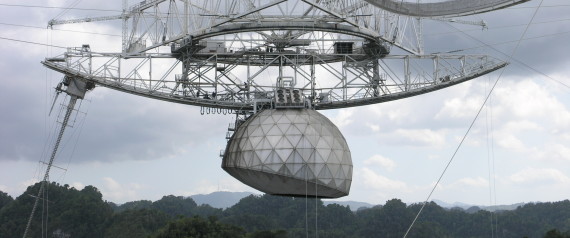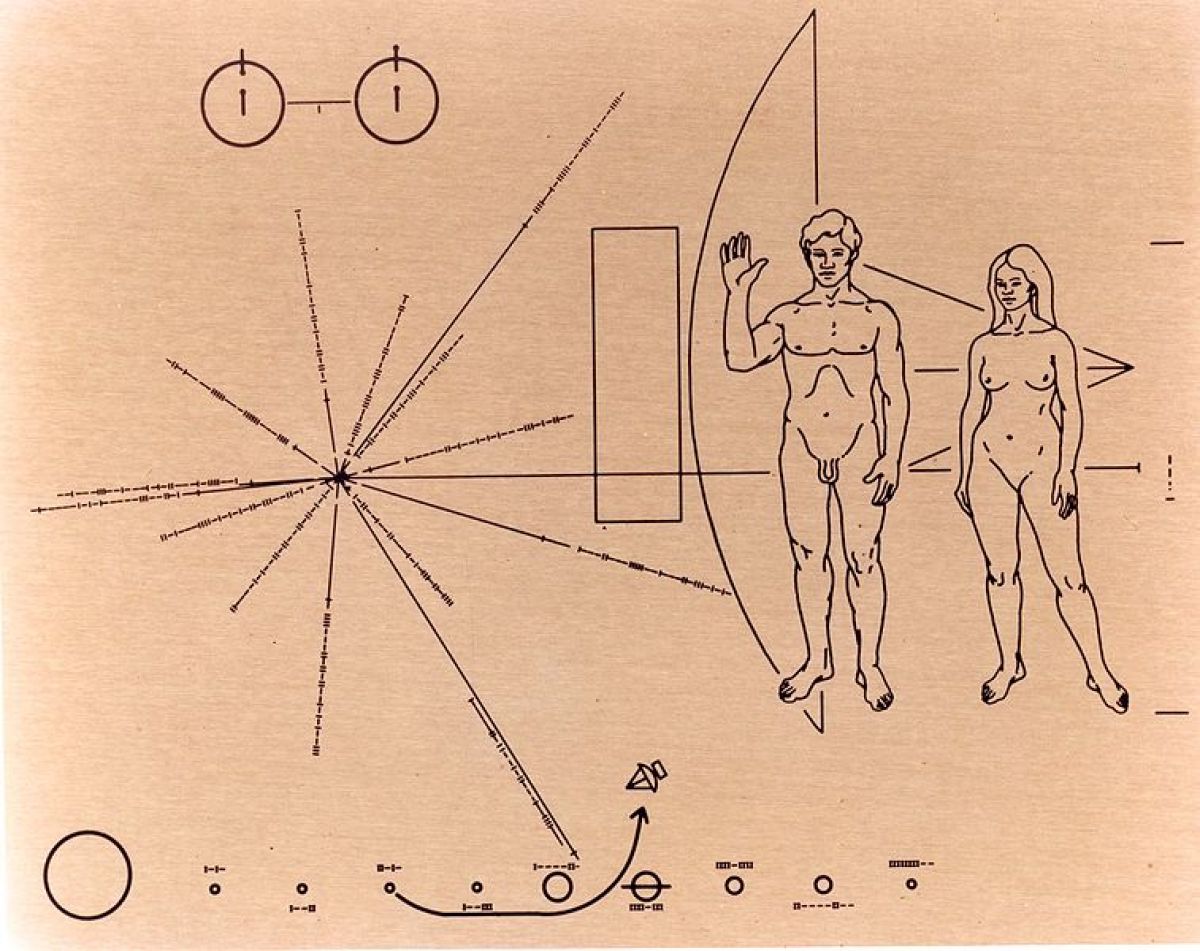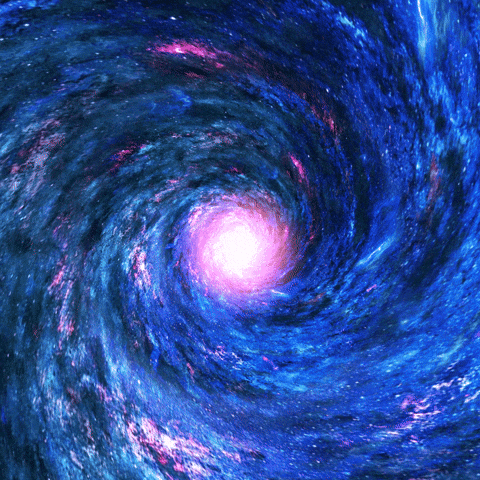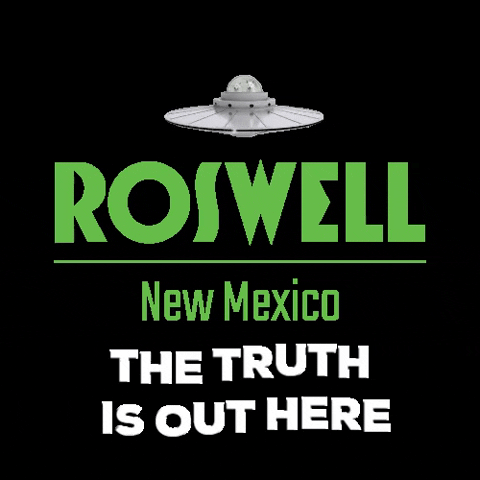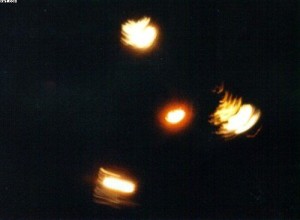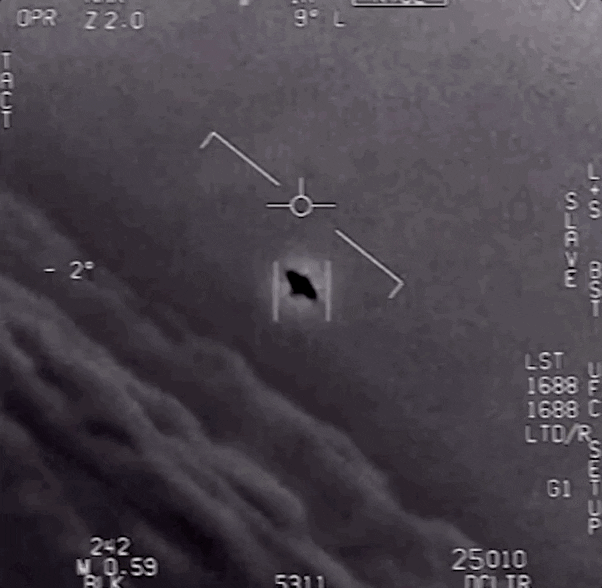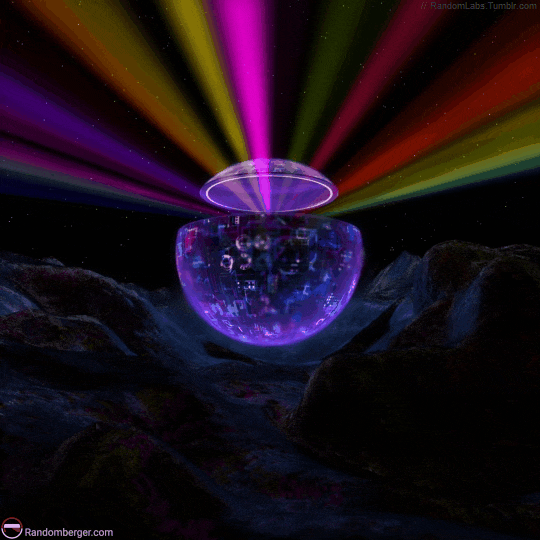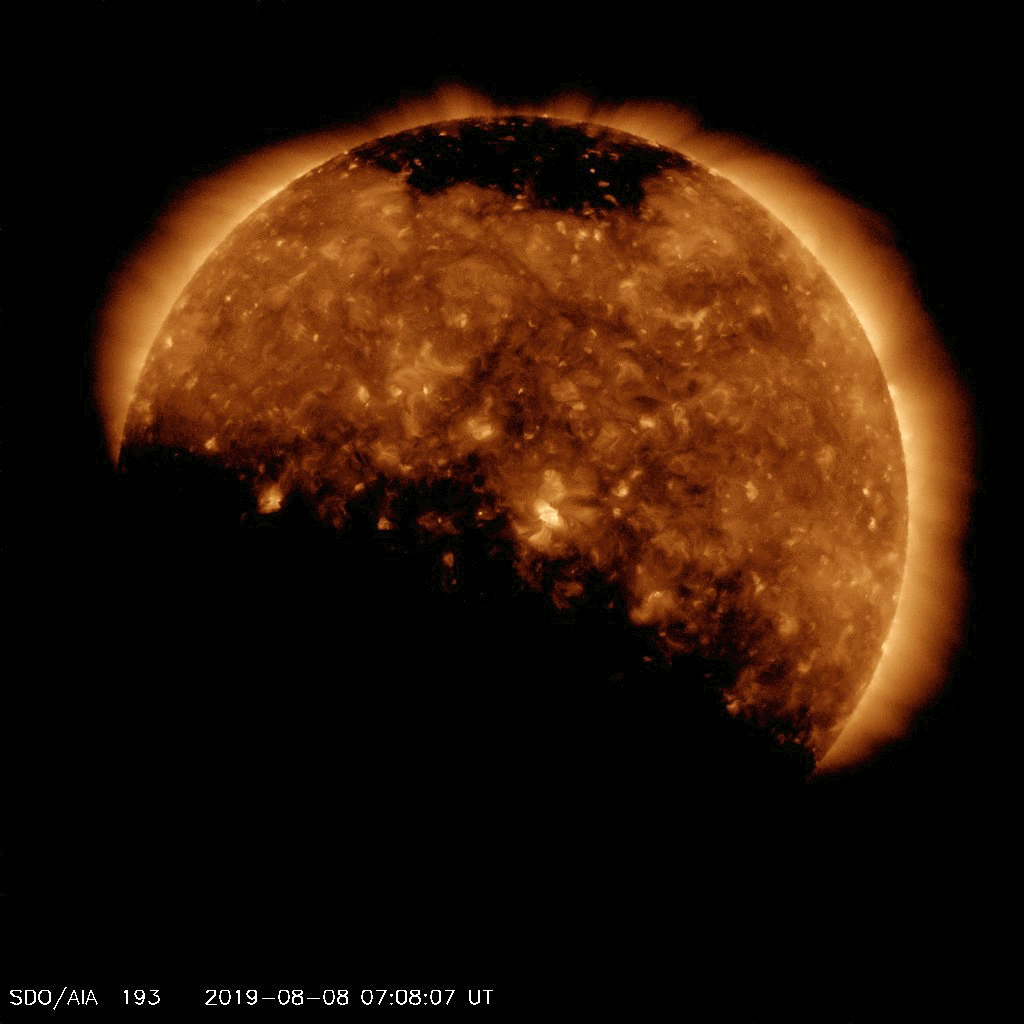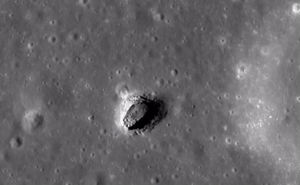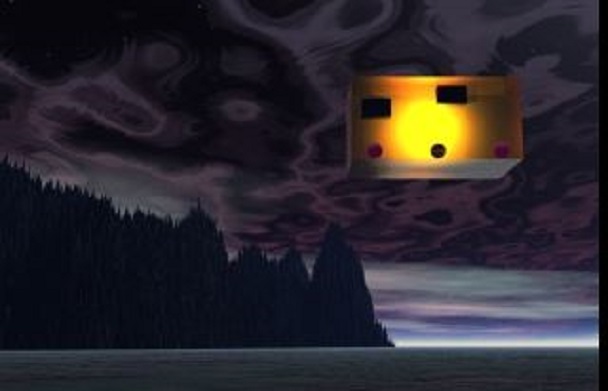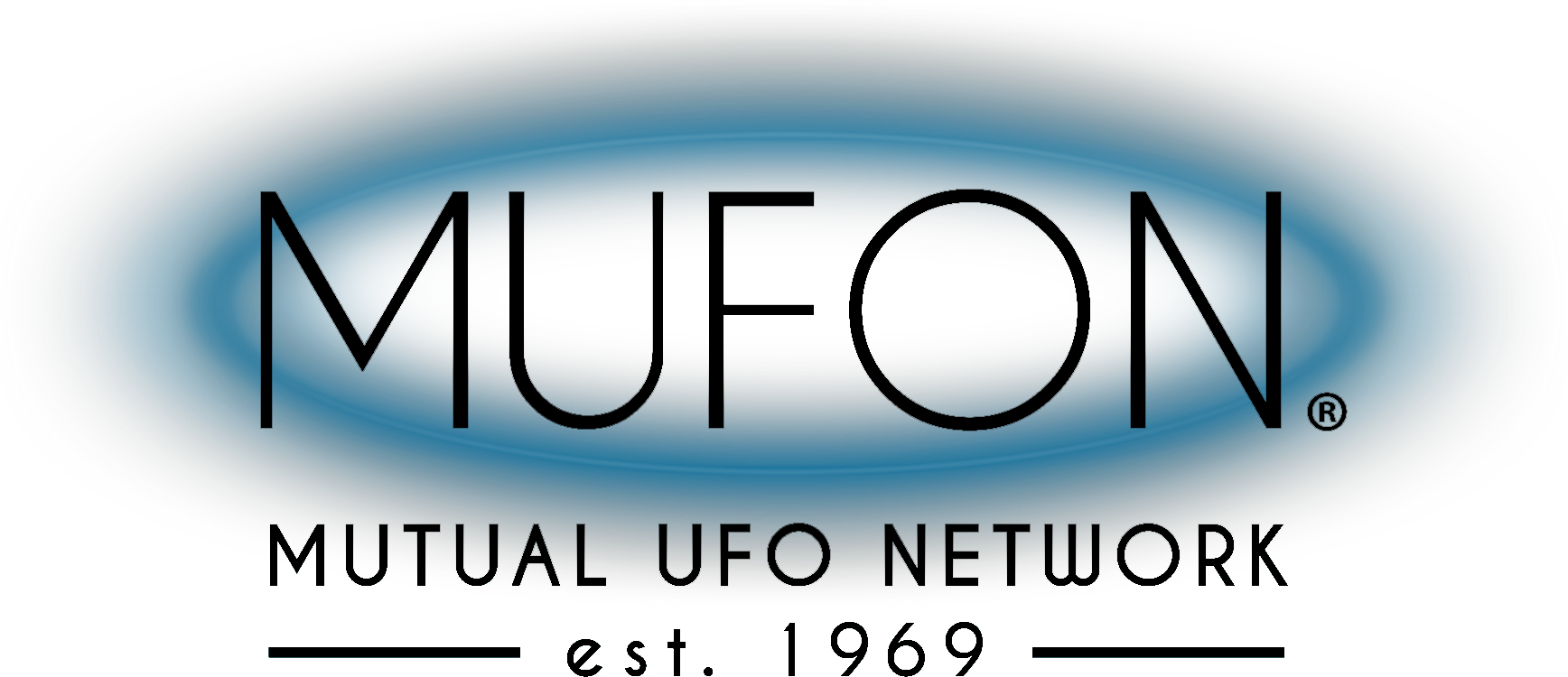Apollo 14 plus 41: The unexpected benefit of Edgar Mitchell
Larry D. Lowe
On January 31, 1971 at 4:04:02 pm local time, Apollo 14 lifted off from Cape Kennedy, carrying Alan Shepard, Stuart Roosa and Edgar Mitchell into history. When the Command Module Kitty Hawk splashed down in the South Pacific on February 9, the world changed, but not for a reason anyone other than Ed Mitchell could realize at the time.
In the ensuing 41 years, the travails and accomplishments of Apollo 14 have become the stuff of American aerospace legend: the difficulty docking with the LEM prior to translunar injection, Mitchell’s emergency reprogramming of the LEM flight computer, the most precise lunar landing to date, the heartbreaking decision to deploy the second EVA research package 30 meters short of the unseen rim of Cone Crater, the first lunar Olympics, a successful completion of the nearly disastrous Apollo 13 mission profile.
It was a story that epitomized the can-do legerdemain with which the Apollo program gave America a world cultural identity in the late ’60’s and early ’70‘s. It was a triumph of engineering, science, training and ‘right stuff’ grace under pressure. At the time, the ramifications of the mission to the understanding of human consciousness were the furthest thing from anyone’s mind. Except the mind of Edgar Mitchell.
Shepard and Roosa are gone, leaving Mitchell as the last living member of the crew. Which is a good thing for humanity, because in the post Apollo years, he has dedicated his life to a far more complex journey.
And therein lies a story of the unexpected benefits of exploration.
A ‘Nobel Prize’ for Thinking.
The sixth man to walk upon the moon became the seventh person inducted into the prestigious Leonardo da Vinci Society for the Study of Thinking during an induction ceremony at the University of Advancing Technology in Tempe, Arizona in June of last year.
Cosmologist and Astronaut Dr. Edgar Mitchell, whose academic credentials include a doctorate in Aeronautics and Astronautics from MIT, joined physicist Dr. Michio Kaku and technologist-futurist Ray Kurzweil in the exclusive society.
Mitchell is best known for his exploration of the Fra Mauro highlands. His investiture in the Da Vinci Society, however, was earned for accomplishments after leaving NASA in 1972. These include founding the Institute of Noetic Sciences and more recently Quantrek. Most significantly,
Mitchell has developed a new cosmology that holds promise for an evolution in how we see ourselves in relation to reality around us.
At Quantrek Mitchell assembled a stellar interdisciplinary team of degreed scientists including Dr. Gary Schwartz, Dr. Walter Schempp and long time colleague Dr. Hal Puthoff to detail that cosmology.
The induction ceremony took place during a colloquium and luncheon in the main hall of the UAT in Tempe. UAT founder, Domnic Pistillo, is also the visionary force behind the Da Vinci society.
In welcoming remarks to the attendees, Tempe Mayor Hugh Hallman commended the UAT for its innovative approach to education. He concluded by reading proclamation declaring June 3, 2011 as the Leonardo da Vinci Society for the Study of Thinking Day.
The presentation of the award was done by former Phoenix area broadcaster and noted author Charles Goyette, after which Mitchell addressed the audience. He delivered a low-key but powerful assessment of his life's work after Apollo.
Dr. Mitchell's selection as one of the great thinkers of our time is not an honorary degree. His goal is correcting what he sees as a flaw in man’s approach to thinking induced in the 17th century. This mistake placed western scientific thinking within a box of materialist context. That, in turn, precludes complete understanding of the laws of the universe.
From Edgar Mitchell's perspective, the best minds of our civilization are not thinking comprehensively. Until they are, we as a species won't likely get where evolution beckons us.
A host of observed, but very basic human phenomena, including consciousness itself, have eluded rigorous scientific description by all disciplines of science. This is true, not because of insufficient evidence for a particular phenomenon's existence, but rather for lack of a theoretical construct which could fit within the prevailing paradigms of science.
— Nature's Mind, Edgar Mitchell, ScD
The Da Vinci Society was established in 2005 when renown expert on lateral and parallel thinking Dr. Edward de Bono was inducted as the inaugural chair. Debono's work explored the way we think. Subsequent inductees have been selected on the basis of what they thought about. Mitchell's unique contribution is to attempt to reconcile what is doing the thinking (mind) with what is being thought about (matter).
René Descartes famously said "I think, therefore I am."
Edgar Mitchell seems to be saying "As I think, therefore reality is."
With his induction into the Society for the Study of Thinking, Mitchell joins a group of thoughtful people. Prior Da Vinci inductees include Dr. de Bono; Dr. Margaret J. Wheatley who investigates speed and change in our society; Dr. Fritjof Capra, author of The Tao of Physics; Dr. Kaku, once called a ‘superhero of the incomprehensible’; Kurzweil, who popularized the concept of a technological singularity; and Dr. Lynn Margulis, a leading proponent of Gaia Theory.
Edgar Mitchell’s cosmology, which he calls the Dyadic Model of Consciousness, fits right into this body of thought. A key component of it is the concept of the Quantum Hologram, derived in 1992 by the German mathematician Dr. Walter Schempp.
The quantum hologram is the first energy phenomenon that directly links all macro-scale matter with the quantum world. For most of the last century, quantum nonlocality was considered a vexing artifact of particle interactions, but with no application to the macro scale world. Nonlocal information was not considered useable. It is now clear that in the proper circumstances that quantum information is both available and useable.
— Consciousness, Quantum Physics, the Zero Point Field and the Quantum Holographic Model, Edgar Mitchell, ScD.
The division of Church and Science
According to Mitchell, the origin of an intellectual catch-22 was a deal cut in the 17th century that denies science a complete mathematical description of reality. Western European civilization had been held together during the dark ages by the church. Religion was the fundamental organizing principle of society. Intellectuals were subject to persecution if they discussed ideas at odds with religious doctrine.
The well spring of our current technological society was hopelessly mired in religious dogma. Strict adherence to biblical tenants and religious orthodoxy made attempts to deduce the underlying principles of the real world perilous.
When Galileo used his telescope to gain observational evidence that supported Copernicus's heliocentric thesis, not only did the church officials refuse to even look through the telescope at the evidence, they tried him for heresy.
As a result, scientific thought was imprisoned.
The emerging rational mind was not to be denied, but there had to be a compromise. In the establishment of scientific thinking as acceptable behavior, the reformists cut a deal with the church.
This agreement was actually a faustian bargain. The philosophical dividing line left consciousness exclusive to religion in exchange for science getting the freedom to investigate everything else. Science got chemistry, physics, mathematics, geology, biology and other disciplines which have shaped western technological civilization. The church got spirits, miracles, prayer and an unseen presence that oversees everything.
The dividing line came to be known as Cartesian Duality, the notion that mind and matter do not interact and hence could be considered separately. It was a fatal reductionism that would preclude holistic understanding for centuries.
For over 400 years a fundamental if intangible aspect of the universe was outside the bounds of hard technical science. The catch-22 is that while you cannot understand everything scientifically until you take consciousness into account, if you are a scientist you can’t take consciousness into account.
Thanks to the separation of church and science along the lines of mind and matter, observable phenomenon that are ‘normal’ in the sense that they reasonably derive from a quantum hologram model, got erroneously labeled 'paranormal'. The implied stigma associated with the 'paranormal' prevented scientific minds from investigating a significant subset of the reality they were working so hard to understand.
The distinction between mind and matter lasted until the early 20th century, when quantum mechanics emerged out of classical mechanics. Even so, hard science clung to the notion of Cartesian Duality. Consciousness is still left out of serious scientific consideration for the most part.
Part of the problem is that Newtonian physics explains everyday experience.
It was Newton's equations that enabled a precision landing at Fra Mauro. In addition, the subjective nature of consciousness makes it a difficult phenomenon to study.
It's no wonder the bargain held so long.
An epiphany in space.
Science’s trusty sidekick engineering designed and built the massive Saturn V launch vehicle that injected Shepard, Mitchell and Roosa into low earth orbit over four decades ago.
Ironically, the technology of Apollo afforded Edgar Mitchell the epiphany that would propel him for the rest of his life. On the return trip, Mitchell was no longer preoccupied with the operational checklist. He sat in the capsule and watched the universe slowly drifting outside the window. The capsule was spun to equalize the fierce heat of sunlight and intense cold of deep space.
In a thoughtful frame of mind, Mitchell watched the earth, sun and moon drift past his view in metronomic progression. He had a 'sudden and profound' realization that connected his consciousness with that of the universe around him.
Consider the experience of the nirvikalpa samadhi which is described similarly in different traditions. In this experience the sense of Self merges with the cosmos and reality is experienced as unity of Self with All-That-Is.
The experience is accompanied by intense ecstasy, a sense of eternity and a complete loss of fear. The experience is ineffable in the sense that description is inadequate to convey the experience and the description alone does not assist others in attaining the experience.
— Dyadic Model of Consciousness, Edgar Mitchell, ScD
Upon his return from the moon, Mitchell began a search for an explanation for that moment of profound realization. The search would lead him deep into physics theory.
The holy grail of physics is a unified field theory, a 'theory of everything'. The goal is one set reliable of equations that explain all science can observe and measure.
These are currently based on the interactions of four fundamental forces that underly all physical matter: electromagnetism, the strong interaction, the weak interaction and gravitation.
Mitchell thought there must be more to it than that. The answer, Mitchell now believes, lies in thinking outside The Standard Model of physics, the closest current theory set that can explain everything.
Integrating consciousness into the theory of everything would go a long way towards explaining a range of so-called 'paranormal' occurrences, spoon bending,
telepathy, precognition, the apparent teleportation of objects and similar phenomena described in Mitchell's book The Way of the Explorer.
That integration is intrinsically difficult. The mathematics of consciousness are far more complex than those needed to get from Cape Kennedy to Fra Mauro.
The forces that physics grapples with are invisible, however their effects are measurable. Consciousness is both invisible and unmeasurable.
"Fundamentally, I'm a cosmologist." Mitchell says, "And the question is: 'How did all of this come about? How does mind and matter interact? How can we write the equations for intentionality?’" The last question is an example of Mitchell’s thought process.
In English we describe intuition as our 'sixth sense'. The fact that such information derives from the quantum description of reality suggests it should be called our 'first sense' as the quantum world precedes the formation stars systems, planets, galaxies, and so forth, from which our usual sensory experience derive. — Edgar Mitchell, ScD
The path to those answers begins, he believes, with understanding Zero Point Energy. Zero Point Energy is the energy that remains when all other energy is removed from a system.
The Zero-Point Energy (ZPE) field as electromagnetic quantum fluctuations is an accepted mainstream concept of quantum mechanics and takes place even at zero degrees Kelvin. It represents an almost unlimited, ubiquitous energy source that permeates and sustains all matter and exists everywhere (even the vacuum of outer space). — Quantrek website.
The direction from there became apparent when Mitchell came across Schempp’s work, which used the notion of a holographic mechanism for conveyance of nature’s information. Reading Schempp's paper, Mitchell had another epiphany.
“My God,” he remembers thinking, “this is what consciousness is about.”
The notion of a Quantum Hologram, Mitchell realized, was the means to include consciousness in the quest for a unified theory. Finally, a mathematical hook was in place to allow consciousness to be part of the equation of everything.
Exactly how remains to be derived, although Mitchell is excited with the initial progress made.
“We have to find a good definition of ‘consciousness’ within the scientific rubric.” Mitchell says, “We think we have a start on it but it's not fully developed."
"Now that we know that consciousness is fundamentally a quantum phenomenon,” he continues, “we can start to look at all of these areas, including alternative methods of healing and on and on."
The Quantum Hologram model may be the missing link between quantum mechanics and general relativity. It is the holistic thread that weaves these two schools of thought together, providing an unprecedented integration of cosmic scale and atomic scale phenomena. Further, early explorations with the mathematics of Quantum Hologram have already led to progress in developing a quantum cosmology, in resolving some of the conflicts between quantum mechanics and relativity, and in suggesting how matter might arise ex nihilo from the field of quantum fluctuations.
— About the Quantum Hologram, Edgar Mitchell, ScD
Building on the realization that the Quantum Hologram model might be able to link General Relativity and Quantum Mechanics through the Zero Point Energy field, Mitchell developed what he calls the Dyadic Model of Consciousness. It is this new model of consciousness that attempts the unification of understanding of mind and matter.
That is the unexpected benefit of Apollo 14.
Path to a new cosmology.
Mitchell's goal is to provide science with a means of understanding the thing that is doing the thinking—our consciousness. In order to do so, he has developed a cosmology that proposes to integrate Schempp's model of the Quantum Hologram into the quest for a unified field theory.
In order to understand this and take the ‘small step for mankind’ from the Quantum Hologram to the Dyadic Model of Consciousness, we must take a brief tour through the history of physics.
Gravitation.
The parable used to illustrate the dawn of the age of reason is of an apple falling from a tree. It hits the head of Issac Newton and a realization strikes him that gravity must be a force acting on an object.
What became known as Classical Mechanics begins with Newton's 1687 publication of his Principia Mathematica. That work put forth the notion of universal gravitation and three laws of motion. This served to explain the observations of Tycho Brahe and Galileo Galilei.
Newton's Principia Mathematica is revered not only for its scientific content but the standard it set for scientific publication. It began a precise dialog that continues to this day, wherein new principles and concepts are described in exacting context of prior work and supported by observational results.
Newton's work would evolve in one direction into orbital mechanics, by which the trajectory of Apollo 14 could be directed to ultimately arrive at a specific location on the surface of the moon. Buzz Aldrin's thesis at MIT was on orbital mechanics. Before that, in 1738, the Dutch-Swiss mathematician Daniel Bernoulli, used it to define Bernoulli's principle, a foundation of aerodynamics.
Newton's work triggered a long list of papers that defined such things as differential equations, generalized forces, the conservation of energy and the canonical equations of motion.
All of this work gave us the foundation to understand gravitation. It is a force working on macroscale objects, things we can handle and identify. These include a spinning baseball that curves in to nip the inside corner of the strike zone or, at astronomical scale, the earth, moon or even a spacecraft in spaceflight.
Thanks to Isaac Newton and a host of successor thinkers, we have gravitation as a fundamental that must be accounted for in a unified theory. Gravitation interacts on all particles that have mass, has infinite range, cannot (to our present understanding) be transformed or shielded against, always attracts and never repels. Gravitation was the first of these fundamental forces to be described mathematically, the litmus test for inclusion in scientific theory.
Electromagnetism.
With the publication of James Clerk Maxwell's 1873 Treatise on Electricity and Magnetism in which the interactions of positive and negative charges were shown to be regulated by one force, the concept of electromagnetism emerged.
Electromagnetism is the force that governs interaction between electrically charged particles. It is also the force that is responsible for observable phenomenon of daily life, beyond those attributable to gravity.
Maxwell's theoretical unification of electricity and magnetism, confirmed by Michael Faraday is described as "one of the key accomplishments of 19th century mathematical physics."
The harnessing of electromagnetism was to the early 20th century what harnessing the steam engine (another result of Bernoulli's work) was to the 19th century. A profound motive force in our society, electromagnetism provided us with the electric light, the electric motor, radio, radar, television.
Understanding electromagnetism was as essential to Mitchell’s journey as understanding gravitation. With the advent of the transistor and its ability to express Boolean logic came the computer chips that performed the calculations that guided Apollo 14 to landing on the moon.
Quantum Mechanics.
As physics probed deeper into the unseen forces that affect matter, it found a realm where bizarre, counter-intuitive effects are at work. This gave rise to notions such as the non-locality of quantum entanglement, wave-particle duality and the uncertainty principle.
A who’s who of famous physicists, among them Max Plank, Albert Einstein, Niels Bohr, Werner Heisenberg, Erwin Schrödinger and others contributed to quantum mechanics which, as Richard Feynman remarked, deals with "nature as she is — absurd."
The Weak Force.
The 1930's saw the arrival of Enrico Fermi's description of what became known as the weak Force. It's at this point that physics gets down to business difficult to associate with daily life. The weak force affects sub-atomic particles known as fermions, is responsible for radioactive decay and triggers fusion that powers stars. It is measurable over a very short range and is several orders of magnitude less powerful than electromagnetism.
The Strong Force.
Physics become even less tangible to common experience with the arrival of the theory of the strong force, that has tremendous power over a vanishingly short range. When John Dalton's atomic model was reduced to protons, electrons and neutrons in 1908, there needed to be a force to counter the electrostatic repulsion that would otherwise rip apart the nucleus of the atom. This is the strong force.
From the 1940's through the 60's a cavalcade of exotic sub-atomic particles with whimsical names such as muon, pion, hadron and boson were discovered as theoretical physics went down a rabbit-hole into a world where things got curiouser and curiouser.
By now, it was taking teams of minds to advance understanding. In the early 1970's Murray Gell-Mann and Harald Fritsch proposed a theory that David Gross, Frank Wilczek, and David Politzer extended to allow comparison to experimental evidence, and the theory of quantum chromodynamics solidified.
All that was left, it seemed was to figure out the equations that would wire these four theories together and a theory of everything could emerge.
Steps to unification.
In 1979, Abdus Salam, Sheldon Glashow and Steven Weinberg won the Nobel Prize in Physics for defining the electroweak interaction, which unified electromagnetism and the weak force. With just three puzzle parts to fit together, what became known as the Standard Model emerged, which described a reasonably sensible relationship between the electrowesk, gravitation and strong nuclear interactions. The Standard Model can be thought of as the theory of almost everything. If its component can be melded successfully, physics hopes to arrive at grand unification and understand how everything works.
Relativity, special and otherwise.
In 1905, Albert Einstein published a paper that presented Special Relativity. In it, he generalized Galileo’s principle of relativity, that all uniform motion is relative, from classical mechanics to all the laws of physics. With it came the principle that the speed of light is the same for all observers, regardless of velocity relative to the source. In exchange for that certainty, Einstein introduced seemingly bizarre consequences such as time-dilation and length contraction at excessive speed.
All of this applied to a special case based on the frame of reference where the speed of the observer is constant. Einstein removed that limitation in 1916, with the theory of General Relativity.
There things stand, with science on an increasingly expensive quest to derive experimental evidence that would vindicate one of a number of competing theories as to what exactly goes on at the sub-atomic level.
“The real dilemma in physics these days,” Mitchell says, “is to bring general relativity and the non-locality of quantum physics into synthesis. We still don’t know how to do it. But physics will not be complete until we do.”
Enter the Quantum Hologram
A hologram in popular understanding is a record of a three-dimensional object’s light emissions captured through the process of holography. Projecting a hologram reconstructs the three-dimensional appearance of the object in the perception of the observer, even though the object is no longer there.
Imagine, as Schempp did, a dynamic hologram, produced with Planck’s Black Body Radiation which, Mitchell explains, is “a property of every physical object, has photon emissions that are nonlocal, quantum entangled and carry information about the emitting object that can be recovered and used by perceptive minds.”
The result would be something akin to 'The Force' in Star Wars, an 'energy field created by all living things, that surrounds and penetrates living beings and binds the galaxy together.' It would provide, Mitchell says, “a mechanism for the ancient concept of the Akashic Record which the ancients believed was the inherent record of everything that happens in Nature.” It would also explain Rupert Sheldrake’s theory of morphic resonance, along with a host of paranormal phenomena and a variety of loosely defined new-age concepts.
The reason for this optimism is that the Quantum Hologram theory extends the reach of the spooky effects of quantum mechanics to the macroscale range of everyday life. That would explain many reports once considered religious or spiritual phenomenon, intuition and intention. Lynne McTaggart is experimenting with intention in search of scientifically valid results.
It’s possible that practical application of the Quantum Hologram effects have been known all along without anyone realizing it. Psychologist Dr. Alberto Villoldo is effectively teaching western minds abilities along these lines derived from knowledge he gained from descendants of the Inca and Q’ero of Peru.
In that context, what Mitchell is seeking might be termed the reunification of mind and matter.
Interdisciplinary investigations.
One of the remaining tasks is to define the means of perception in the brain which translates the projections of the Quantum Hologram into the mind of the perceiver.
Which leads to a discussion of neurophysiology beyond the scope of this article.
The interdisciplinary nature of the investigations Mitchell and the Quantrek team are engaged in is such that it’s easy for skeptics to discount his ideas as preposterous. Like the blind man trying to describe an elephant by feeling its leg, many don’t have a broad enough understanding of the complex puzzle Mitchell is piecing together. Copernicus's heliocentric thesis was considered outrageous 400 years ago, but is now accepted as fact.
Ever patient, Mitchell presses on, despite the controversy inherent in the realm of thought so far removed from what seems to be consensus experience. Consensus experience, however, is still bound by the confines of the box of context that science was confined to at the dawn of the age of reason.
Although popular appreciation of his work remains elusive, progress is being made on the theoretical front, one small step at a time. Mitchell points to a paper done by Weili Lou (a member of the Quantrek scientific team) on Intrinsic Awareness, in which she postulates a form of basic awareness upon which consciousness is built.
The intrinsic awareness (IA) that we all have is a universal phenomenon among all living beings. IA is the ground state of our conscious experiences that is timeless and irreducible. The non-applicability of reductionism to study of IA challenges the current “theories of everything” in which consciousness is ignored. — Intrinsic Awareness, Weili Lou, PhD
Dyadic Model of Consciousness.
At the end of this long trail of increasingly sophisticated models of what is, the summation of Mitchell’s quest, is his cosmology, which he presents in a four page paper at the Quantrek website. It’s demanding reading. The essence is that the Cartesian Dualism is an artificial distinction and that no true 'theory of everything' can stake claim to success unless it accounts for the integration of a theory of mind with a theory of matter. Therefore a new, truly unified model is
required.
The dyadic model assumes that all human experience, including the mystical experience, has a valid informational basis, that is information (patterns of energy) is the root of all perception. It accepts the sciences from quantum science through paleontology have produced valid bodies of information.
Applying the model to problems in cosmology results in a self-organizing, learning, volitional universe that looks like the three dimensional universe we seem to inhabit. Applying the model to problems in science suggests that many paradoxes in science result from not rigorously observing the subtle interactions between “existence” and “knowing”, that is to say confusing the map with the territory. Applying the model to subjective experience suggests that all interpretations, the “meaning” of experience changes as additional information is added. In the dyadic model both science and religious experience are just two different ways of “knowing” that employ different functions of the brain and are dyadically coupled.
– Edgar Mitchell, ScD
Cosmological relevance.
What has all of this to do with UFO's
Two things:
- One is the tantalizing prospect that understanding how the ephemeral awareness of consciousness interacts with classical and quantum physics might lead to an explanation of the fantastic and unbelievable behavior of certain observable phenomena that are lumped into the category of UFO’s. Recent developments suggest that electromagnetism may play an unrealized role in the manifestation of the phenomenon, beyond the notion that the propulsion and control systems might be based on an undiscovered interaction of electromagnetism and gravity.
- Another more pragmatic connection is that Edgar Mitchell is part of a growing demographic: intelligent, thoughtful individuals who have read the valid literature, done their own thinking and come to the conclusion that humanity is faced with an enigmatic phenomenon that represents consciousness so advanced that it often appears, as Arthur C. Clarke put it, 'indistinguishable from magic'. The observed behavior reported is often dismissed out-of-hand by scientists too hamstrung by the tenets laid out at the beginning of the age of reason and too confident in their hard-earned intellectual prowess to acknowledge the implications of evidence they either won't consider or can’t rationalize away. Mirroring the range of life on earth, there is a wide range of exoconsciousness interacting with humanity, with varying methods and motives. It does so in a covert and enigmatic fashion and thus is dismissible by many who don’t look too closely at the evidence. Western technological civilization, or at least its political, media, academic, scientific and military establishments are content ignoring or denying this fact of everyday life.
In both his remarks to a student assembly the day before the induction ceremony and during his acceptance speech, Dr. Mitchell made a brief and direct comment that he believes advanced intelligence exists in the vast universe.
Further, he said, it is already interacting with humanity. Elements of the U.S. Government and industry are aware of this, he said, but are keeping what they know from the understanding of the population by controlling the message of the media and steadfastly refusing to discuss or admit the situation. Ridicule remains an effective weapon in their arsenal, although it grows increasingly strained.
The reason for secrecy and denial of this is traditionally ascribed to concern the public might panic. But more likely an admission that advanced intelligence is already here on earth would challenge the stature of the minority in power in political, media and military establishments. There may be other reasons as well, given how little is actually known about the advanced intelligences and their motives.
Mitchell is as matter-of-fact about the existence of advanced intelligence operating in earth's biosphere as he is about having been to the moon. It would
be a mistake to underestimate his conviction based on the tenor of his presentation. His soft spoken demeanor belies the daring yet thoughtful nature of the test pilot he once was, and at heart, still is.
While others, such as the largely ineffectual exopolitical community, loudly decry the lack of 'disclosure' to little or no avail, Mitchell prefers to simply and quietly educate those he meets to the extent he estimates they are prepared to listen.
Towards an advanced civilization.
If Rupert Sheldrake’s theory of the morphogenic field holds true for humanity, and it certainly must if it is true at all, then when a critical mass of human quantum biocomputers (our brains) start operating with an understanding of how we are all connected, the whole human race will ‘get it’.
That would revolutionize our value system. It would free us from the twin chains of a purely materialistic world view and a religious world view divorced from evidential reality. This duality vexes our civilization and is at the heart of conflict over resources and our lack of stewardship of the ecology, among other things.
Mitchell’s efforts to break the ideological logjam and open up western minds to the point where contact can occur in a more open and official manner are based on two realizations:
Humanity cannot advance to a point where it can join the cosmic ecosystem until such time as it gets past a crippling dependence on dwindling supplies of petrochemical based energy. Or the alternative, the remarkably dangerous practice of generating power through the expensive high-wire act of maintaining controlled nuclear fission to generate electricity.
Nor is it likely advanced intelligences would consider widespread, open contact until humanity evolves spiritually past Cartesian Dualism and out of the ego-based, materialist isolation. Perhaps contact is not possible unless the human mind has learned to operate in a truly Dyadic fashion.
To address the first, Quantrek is actively engaged in research to enable widespread utilization of Zero Point Energy, a process involving nano-scale fabrication of massive diode arrays that could extract virtually limitless amounts of motive power from the quantum level foaming of atomic structure.
To address the second, Mitchell presents his cosmology whenever possible. He realizes the power of the morphogenic field of mass human consciousness. A collective adoption of the Dyadic Model of Consciousness could end the duality between the indigenous people’s belief systems and western technological civilization.
In retrospect, Mitchell's hard scientific data gathered on the moon, while significant and valuable, pales in comparison with his realization of nature of the universe and reality.
If he can get his message into enough minds, something marvelous may be in the offing. Waiting in the wings somewhere beyond 2012 is an evolutionary leap, a revolution in consciousness.
Edgar Mitchell, now past 80, is still a man on a mission.
His mission is not continue to explore the physical cosmos, although he is complementary of the efforts of the New Space community. He is wistfully serious about wanting to break John Glenn's record for the oldest person to go orbit.
His mission is to give human consciousness the means to understand itself.
This article is copyright © 2012 Larry D. Lowe and can not be copied to in its entirity to other websites or email lists without author's written permission.
Permission is granted to include short extracts of this article on websites and email lists with a link to this original work.
